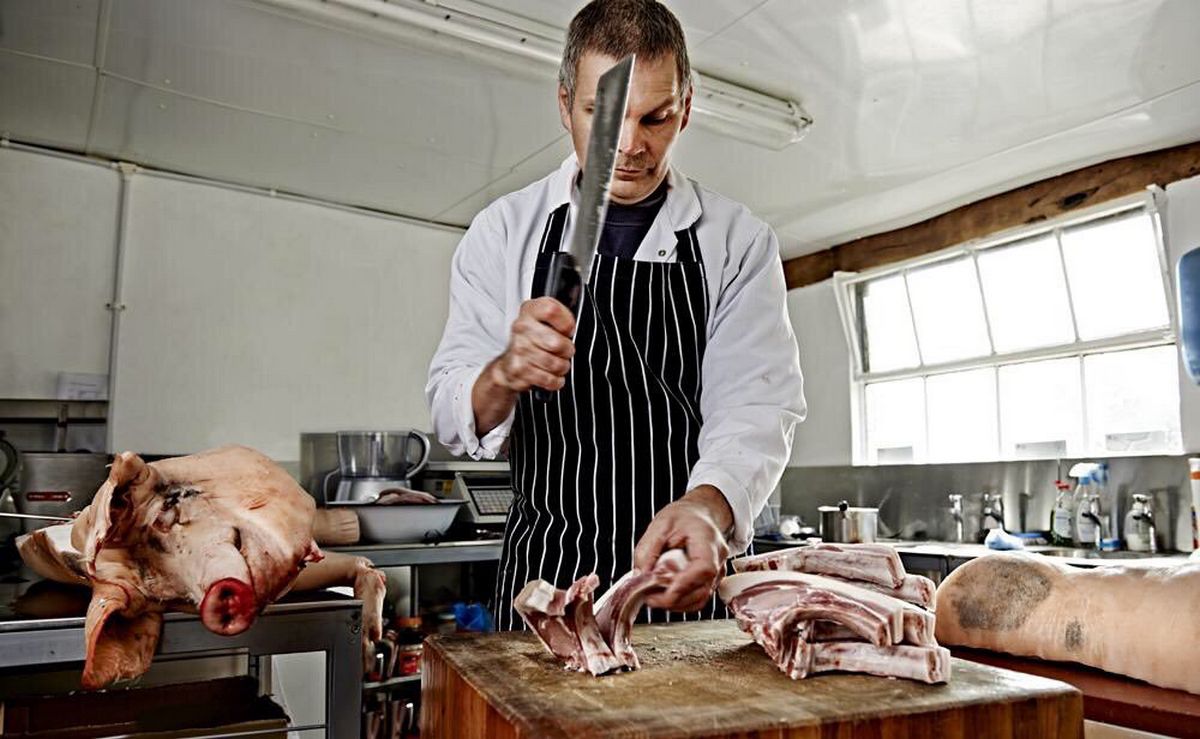The whole hog If you enjoy being a carnivore, every juicy, meaty mouthful and we are to rear pigs for the table they are to live (at the utmost a free range, foraging life with the sun on their backs we nurture that flavour with apples and acorns) and die for our table we owe those porcine beasts the respect to make use of every part of that animal and not let a bit go to waste. As the saying goes “you can use everything but the oink” It is possible to conjuring up great ways to feed a crowd cost effectively, ethically and surprisingly finding some very tasty recipes on the way. Traditionally when a pig was slaughtered every part of that animal was used for food production. We need to be conscious of food waste and food shortages.
The blood was used for black puddings and boudin noir, all the meat was utilised for fresh cuts or preserved by methods for curing and drying producing bacon, salamis, chorizos and cured meats using a variety of methods all over the world. The back fat can be rendered (slowly heated and melted) to make lard. Take a look back to the past for recipes take inspiration from methods long forgotten used daily by skilled butchers and farmers wives and bring them back into use before they slip away as unimaginable snippets of history. In the old butchery books we reference for our recipes sausage and small goods dated 1935 we have found methods for pates and meat pastes, “savoury duck” which contains no duck at all but based on pig rind and liver with spices. They even go as far to suggest methods to make soap with the fats left over. Offal, the internal organs are over looked as an ingredient and all to often our noses are turned up thoughts going back to school dinners and tough liver! The liver, heart, kidneys, tongue and cheeks can be turned into faggots. We are seeing a real revival of the popularity of these tasty offal, sage and onion parcels wrapped in the traditional cawl fat from the pigs stomach on our stall at the farmers markets we attend always selling out as customers seek out comfort food evoking childhood memories of their mothers homemade versions served with creamy, buttery mash, onion gravy and mushy peas. Offal can be bought at a butchers shop relatively cheaply. They may sometimes use the term “pluck”. This is the collective term for all the offal. A good butcher will be buying in whole carcuss of meat or sourcing straight from a farm and will want to be selling all of the animal not just the popular cuts so will be happy to advise.
So you’ve got a the family coming round, a crowd to feed. Give them the whole hog experience. Start with a few nibbles while they wait for the main event. The Spanish make tapas similar to pork scratchings from pigs lips called morro. Utilise the rest of the pigs head to make brawn, a traditional British terrine dish to serve as a first course with some salad leaves with a spicy tomato and onion chutney on the side or pickles.Serve some faggots as the main course with the buttery mash, onion and red wine gravy, maybe those mushy peas and see how everyone is amazed at how tasty these morsels can be. Morro Trim the lips from a pigs head slicing thinly with a sharp knife ( tip- you can use the ears as well to make it go a bit further. Give them a good wash and slice thinly) If you can leave them uncovered on a dish in a fridge overnight to allow the skin to dry out they will crackle better. When you are ready to cook them mix up some sea salt, ground fennel seeds and black pepper. Sprinkle over the dried slices of pork ears and lips and toss so the are coated in the season mixture. You can deep fry them in the more traditional method for morro in batches to puffed up and crispy or as I prefer bake them in preheated oven spread out on a baking tray until crunchy and crisp.

